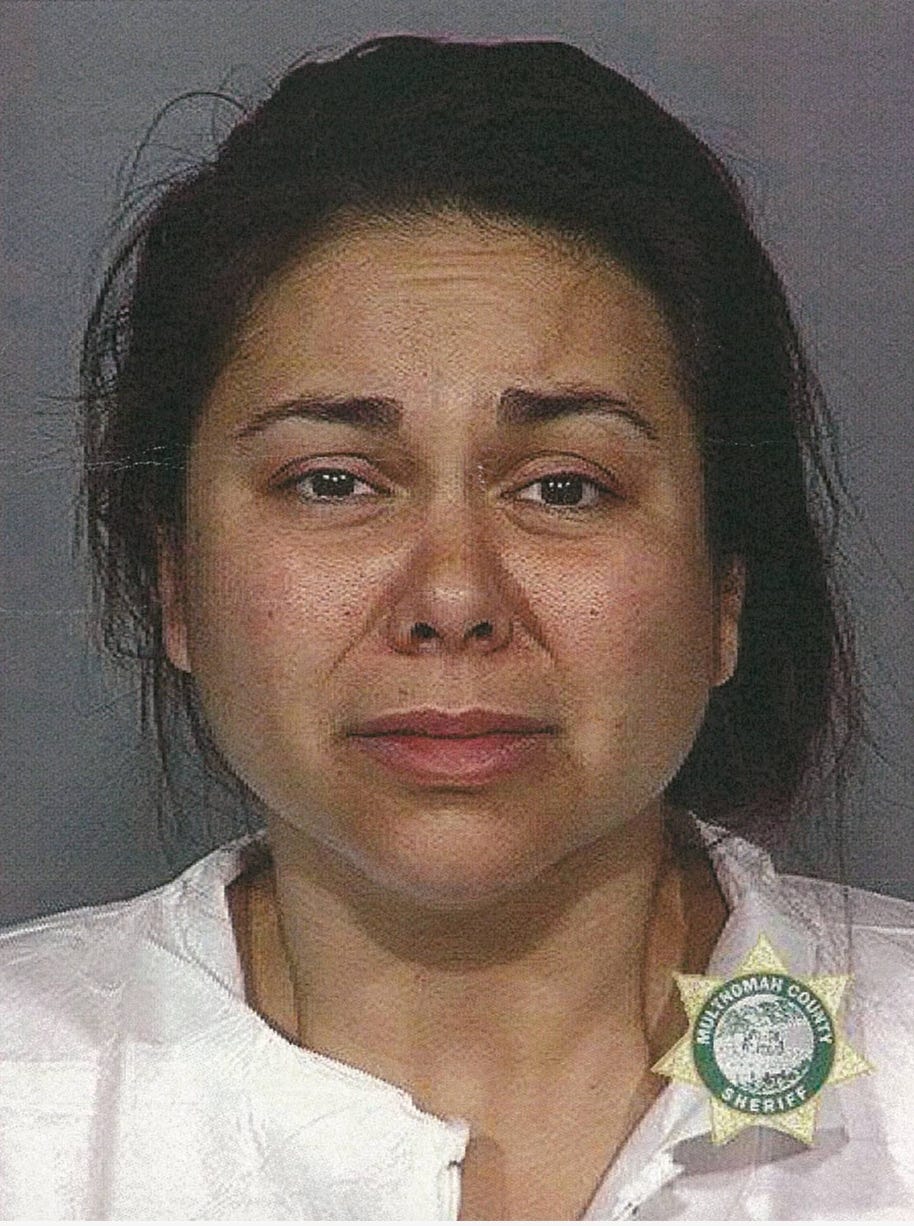A Portland Mother Drops Her Children Off A Bridge. How Does This Happen?
Fourteen years ago today, Amanda Stott-Smith determined her two young children should die by falling 90 feet into the Willamette River. I set out to find out why.
This excerpt from my book, To the Bridge: A True Story of Motherhood and Murder, originally ran in Willamette Week. Thinking today of Eldon and Trinity, as well as all the people who told me the story and are telling it to me still.
At 1:17 a.m. on May 23, 2009, Pati Gallagher and her husband, Dan, were having a last after-dinner drink on the patio of their waterside condo in Portland. Their chairs were angled toward the Willamette River, not fifty feet away, when they heard something hit the water. The couple did not become alarmed. Lots of things fell from the Sellwood Bridge: shopping carts, bottles tossed by hooting teenagers.
Then they heard a child yell, "Help me!"
There was no moonlight that night and few lights onshore. The couple scrambled to the river's edge but could see nothing.
"Where are you?" Dan shouted.
Pati called 911. She told the operator someone had fallen from the bridge and was in the water yelling for help. It had been more than two minutes.
"Can you hear that?" Pati said, and she held the phone toward the river.
The voice floated north with the current, past a recreation area, past an old amusement park. It was a clear night, and had someone in the water been looking toward the river's east bank, they would have seen the outline of a Ferris wheel and a thrill ride called the Scream-N-Eagle.
The screams continued. "Help me! Help me!"
David Haag, who lived in a floating home along the river, heard the cries for help. At one thirty, he and his companion, Cheryl Robb, motored their boat onto the Willamette to find whoever was screaming. It was twenty-five minutes before they saw the partially submerged form of a young girl. Haag jumped in the water and grabbed her. He was swimming her back to the boat when Robb called out, "My god, there's another one!"
Haag went after the other child, a boy. The girl, who had been in the fifty-six-degree water for more than thirty minutes, was sobbing. The boy was not. He had been facedown in the water and was not breathing when Haag got him into the boat. The boy was still not breathing by the time Haag motored the boat to a yacht club on the river's eastern shore.
It was now 2:10 a.m. Officers were waiting. The water beneath Portland's southernmost bridge was now cut by rescue boats, lit by searchlights, beaten by helicopters, the river's banks trampled by police and residents who could not or did not want to go back to sleep.
Two miles downriver in Milwaukie, twelve-year-old Gavin Stott could not sleep. He had decided to stay home when his mother Amanda went to pick up his two younger half siblings. At midnight, and again at twelve thirty, he woke his grandparents, asking why his mom was not back.
Kathy and Mike Stott called their daughter Amanda. She did not answer their calls.
At 1:33, Kathy Stott called Amanda's estranged husband, Jason Smith, asking if he had spoken with Amanda.
Amanda had in fact phoned Jason at 1:22 a.m. He had not picked up her call. But after speaking with Kathy Stott, he tried calling Amanda back. For more than an hour, she did not answer.
At 2:49 a.m., Amanda answered.
"Help me," she said.
"Are the kids okay?" Jason asked. "Where are the kids?"
"Why have you done this to me?" she said. "Why have you taken my joy away?"
Around 7:00 a.m., a news report: two children were found in the river. Jason called the police. He told them the kids in the river might be his. He and his mother headed to the Portland Police Bureau. As they were speaking with detectives, they received confirmation that the children found in the river were Jason's.
His daughter, Trinity Christine Kimberly Smith, age seven, was in the hospital in serious condition. His son, Eldon Jay Rebhan Smith, had drowned. He was four years old.
At 10:25 a.m., Portland police officers approached a battered blue 1991 Audi parked on the ninth floor of a downtown Portland parking garage. The car matched the description of the one they were looking for. A woman's hand, holding a cigarette, rested on the open driver's-side window. Officer Wade Greaves climbed a retaining wall to get a better look. The woman spotted him and opened her car door. She bolted. Officer Greaves ran after her. The woman made it to the garage's outer wall, climbed through an opening, and dropped. Greaves grabbed her. He and another officer hauled Amanda Jo Stott-Smith back up and placed her under arrest.
News of the incident dominated the front page of Sunday's newspaper, though only the barest details were available. The children had been in the water more than 30 minutes. Onlookers shared disbelief and grief.
The article included Amanda's mug shot. Her forehead was creased with tension, but except for her dark hair in disarray, she looked…how did she look? Dazed? Spent? In surrender?
I could not tell, standing at my kitchen counter, holding the morning's first cup of coffee. What did I expect a mother who had just dropped her children off a bridge to look like?
What had brought her to the bridge, to a place where she thought the right decision was to murder her children?
Keep reading with a 7-day free trial
Subscribe to Make More Pie to keep reading this post and get 7 days of free access to the full post archives.






